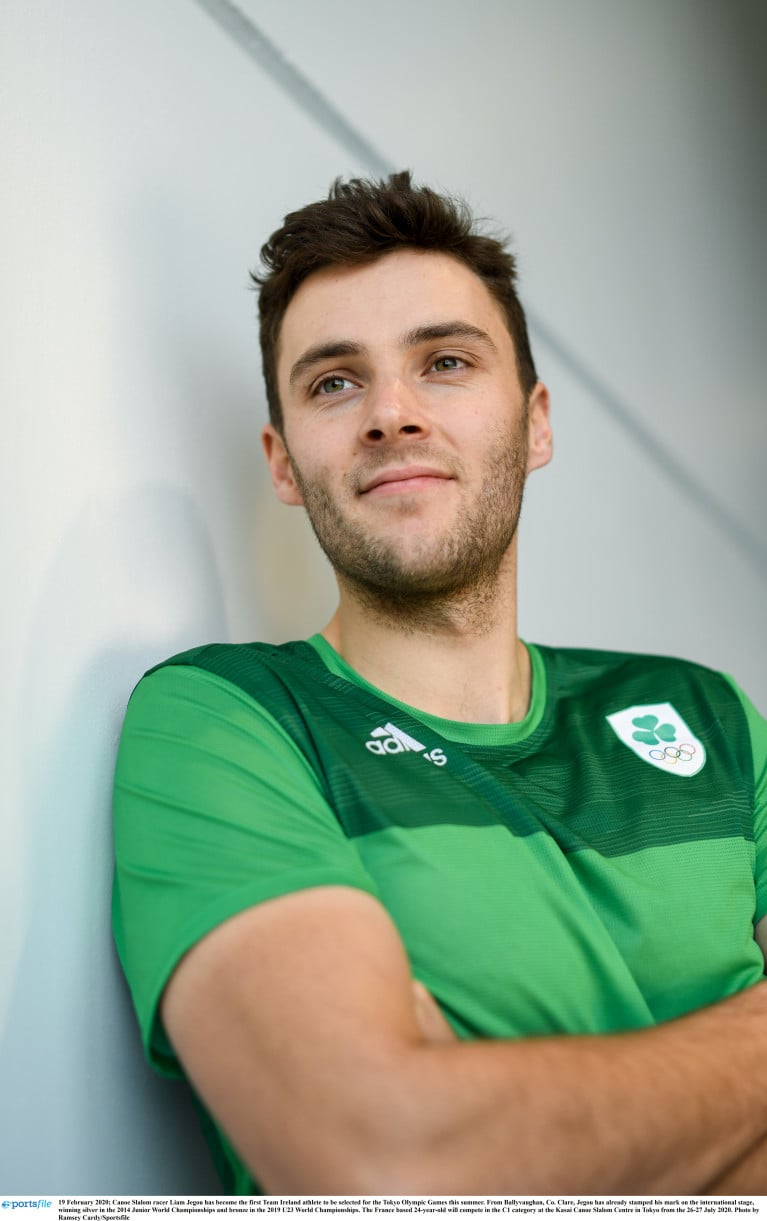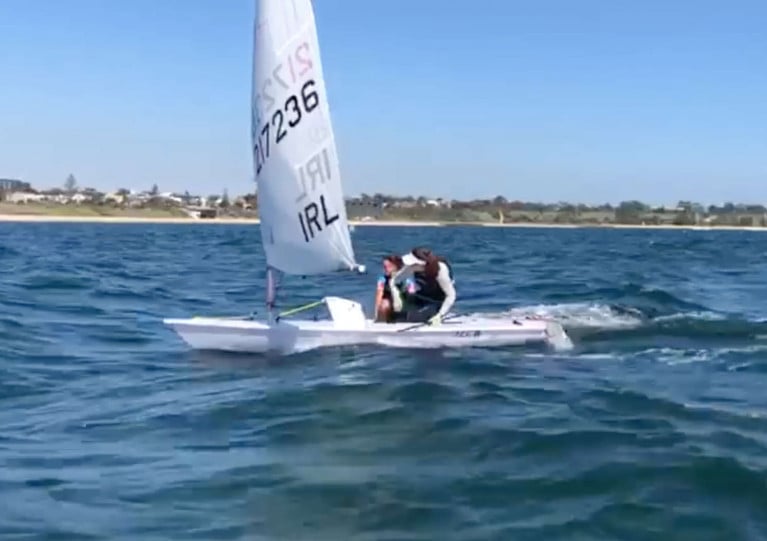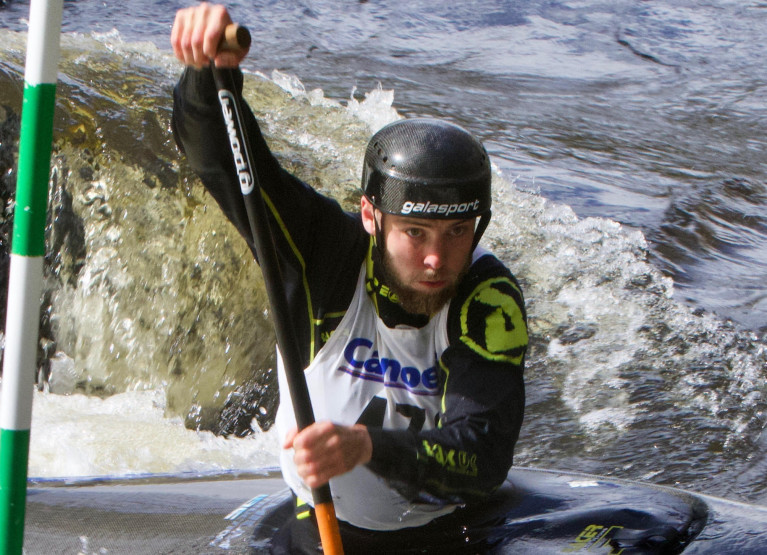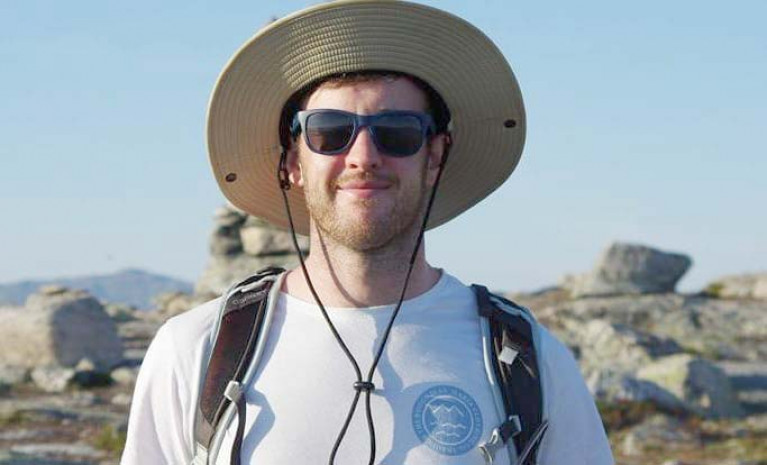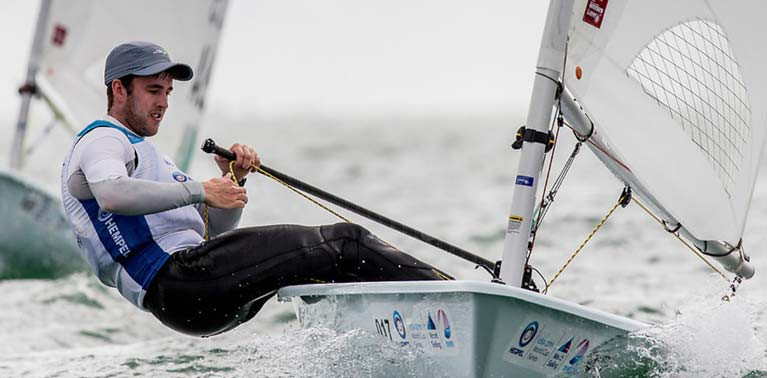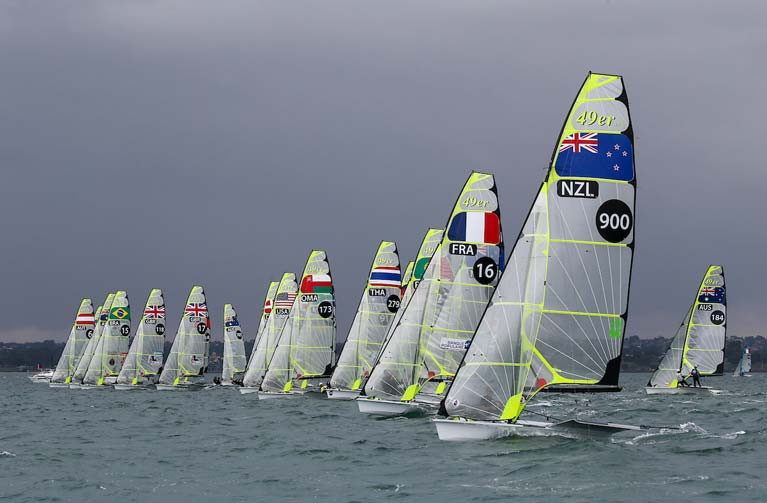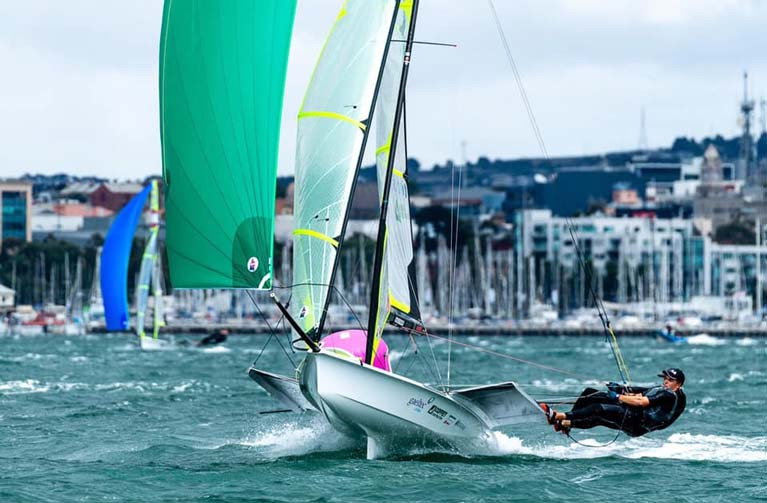Displaying items by tag: Tokyo 2020
Ireland Team to Fly Business Class to Tokyo
The Olympic Federation of Ireland (OFI) will fly athletes, including rowers, canoeists and sailors, in business class to the Olympic Games in Tokyo. With less than five months left until the Opening Ceremony in Tokyo, the composition of Team Ireland is starting to take real shape.
Qatar Airways, who will fly the team, has a 5-star rating by Skytrax, which also awarded the airline World’s Best Business Class.
Athletes will benefit from full lie flat beds and catering to suit their nutritional routine. The mood lighting in the cabin will help adjust athletes’ body clocks to the Tokyo time zone and the cabin is pressurized to a lower altitude which equates to more oxygen and less travel and fatigue.
Speaking today, Sarah Keane, President of the Olympic Federation of Ireland said,
“We as a board and executive really want to give our athletes every opportunity to arrive in Tokyo rested and ready for what for many will be the most important competition of their lives. This is their time, and we are proud to support them with business class travel amongst other things.”
Olympic Federation of Ireland CEO Peter Sherrard said,
“For the first time, we are able to provide business class travel for our athletes, and the upgrade is thanks to the support of our sponsors, FBD, and partners Indeed and Circle K. Our shared goal is to do everything in our power to enhance the performances of our athletes.
“While we would like to be able to provide the same for the support staff, everyone on Team Ireland agrees that our priority needs to be the athletes who will be competing to represent the whole country at Tokyo 2020.”
The OFI has also teamed up with Vita to offset the carbon emissions involved with travelling to Tokyo and will make a contribution of €10,000 to support their work. Vita is a next generation Irish overseas development agency working in Africa. Their innovative programmes transform lives of women and their families in Africa by providing food security as well as access to clean water and clean cooking, while also, generating carbon emissions savings that are sold as certified carbon offsets.
CEO of Vita, John Weakliam said,
“We are very proud that Team Ireland has chosen Vita to collaborate with on climate action. By offsetting their travel with us, the Olympic Federation of Ireland is supporting some of the world’s most disadvantaged families while demonstrating the importance of flying responsibly.”
To date Team Ireland has made one official team announcement – with Liam Jegou competing in the Canoe Slalom in Tokyo. Further team announcements will be made in the coming months once final rankings, selections and nominations have been completed by athletes and sports.
It was a case of Rio medallists showing their form after two more races at the ILCA Laser Radial Women’s World Championship in Melbourne, Australia. The National Yacht Club’s Rio silver medallist Annalise Murphy recorded single digit (9,7) results to lie 10th overall. Fellow Rio podium mates, gold and bronze medallists Marit Bouwmeester (NED) and Anne-Marie Rindom (DEN) top the leader board as the fleet splits for the final stages.
Aoife Hopkins (Howth YC) is 30th after a 20th and 21st, but it is silver fleet for the other two Irish contenders. Aisling Keller (Lough Derg YC) now lies 60th following 24th and 29th place finishes, while Eve McMahon (Howth YC) is in 67th scoring 30th and 37th today.
Racing got under way just after the scheduled starting time in a fresh southerly breeze, dying somewhat in race 2 and not allowing for a scheduled third race.
Organisers have scheduled earlier starts for Thursday and Friday’s gold and silver fleets with three back to back races in an attempt to make up for lost races.
Overall results are here.
Early Boost for Howth Yacht Club's Eve McMahon in Irish Olympic Laser Radial Trial
Dublin teenager Eve McMahon's bid for the Tokyo Olympics got a boost today when she finished top of four Irish girls competing in the opening day of the Laser Radial World Championships in Melbourne.
Light and flukey winds frustrated competitors and race officials alike, allowing for only one of the scheduled two races on Port Philip Bay.
McMahon (HYC) was best of the Irish finishing 20th in the yellow fleet, ahead of Aoife Hopkins (HYC) in 45th place. In the Blue fleet, Annalise Murphy (NYC) recorded a 38th place, while Aisling Keller (LDYC) came 42nd. Read Afloat's championship preview here.
Defending titleholder Anne-Marie Rindom (DEN) took first place in Yellow Fleet while Marie Barrue (FRA) won Blue Fleet.
“It was a bit light,” Anne-Marie said of the conditions. “The change didn’t really come through.” But 12 races are scheduled for the regatta. “It’s early days, but it’s a good way to start,” she added.
Yellow Fleet had the better of the weather, getting away shortly after the scheduled start time in six knots of breeze and managing to finish before the wind began swinging wildly.
Those in Blue Fleet had a frustrating day, with their race abandoned at the first mark owing to a 30-degree shift. It is an ill wind that blows nobody any good and Australian Olympic hopeful, Mara Stransky, said she was caught too far left in a poor position when the abandonment came. She regrouped and finished the re-started race in fifth position. “I’m happy after such a whacky day,” she said.
Olympic champion, Marit Bouwmeester (NED) finished in third place in Blue Fleet and described it as ‘OK’. “It’s a nice way to start the event,” she said. “The race committee had a challenging day with all the wind shifts, but it’s good to get one race in, to get the regatta started.”
Maud Jayet (SUI) and Vasileia Karachaliou (GRE) share third place overall after finishing second in their respective fleets.
The ILCA Laser Radial Men’s World Championship is being sailed at the same venue, with the fleet dominated by Australians. But it was a Russian, Daniil Krutskikh, who won today’s race, followed by locals Michael Compton and Jordan Makin.
Like the women’s Blue Fleet, the men had several re-starts and abandonments before getting their first race off, and completed.
With light winds forecast for tomorrow morning, the race committee has announced a first signal be at 2 pm, as scheduled. If the winds settle as forecast, they will try to get three races sailed to get the regatta back on schedule.
Provisional Results after Day 1
Laser Radial Women’s Worlds
1 – Marie BARRUE (FRA) 1
1 – Anne-Marie RINDOM (DEN) 1
3 – Maud JAYET (SUI) 2
3 – Vasileia KARACHALIOU (GRE) 2
5 – Marit BOUWMEESTER (NED) 3
5 – Svenja WEGER (GER) 3
7 – Mirthe AKKERMAN (NED) 4
7 – Marie BOLOU (FRA) 4
9 – Sarah DOUGLAS (CAN) 5
9 – Mara STRANSKY (AUS) 5
The Heat Is On For Ireland’s Quartet Of Laser Radial Sailors Competing For Tokyo Olympic Spot
In her latest column for The Irish Times, athletics great Sonia O’Sullivan meets the four women in contention for Ireland’s sole Laser Radial spot at the Olympic Games in Tokyo this summer.
After frustrations in her attempt to qualify in the two-handed 49erFX class, Annalise Murphy is back in the boat with which she won silver at the 2016 Olympics — Ireland’s strongest Olympic sailing result to date.
But this time there is tough competition from three women who were still coming up when she was racing for that medal in Rio — namely Aisling Keller, Aoife Hopkins and 15-year-old Eve McMahon.
All four have been training together in Melbourne, Australia since the start of the year, ahead of the Laser Radial World Championship (starting tomorrow, Friday 21 February) which will be the first of three chances between now and April for one of them to secure that coveted spot.
“Think about how that must be for them,” writes Sonia. “They know that only one of them will go to Tokyo so they wouldn’t be human if they didn’t have some sort of selfish instinct in them. It would be only natural for them to keep little bits and pieces that they’re learning back for themselves to give them a better chance of being the one who gets the spot on the boat.
“But they also know that the more they push each other, the better they make each other. And the better they make each other, the greater chance of a medal for Ireland and a better all round result for Irish sailing.”
Sonia also gets out on the water with Annalise to experience first-hand the speed and excitement of the Laser Radial — and the rush Annalise and her fellow challengers will be feeling when the training is done and the race is on.
Canoe Slalom racer Liam Jegou has become the first Team Ireland athlete to be selected for the Tokyo Olympic Games this summer. Originally from Ballyvaughan, Co. Clare, the France-based Jegou has already stamped his mark on the international stage, winning silver in the 2014 Junior World Championships and bronze in the 2019 U23 World Championships. The 24-year-old will compete in the C1 category at the Kasai Canoe Slalom Centre in Tokyo from the 26-27 July 2020.
Jegou is the second Irish athlete ever to compete in the C1 Canoe Slalom at the Olympic Games, with the only other athlete being Mike Corcoran, who last competed in Atlanta 1996, the year in which Jegou was born.
Jegou said he was intent on seizing his opportunity in Tokyo. “Being an Olympian has always been one of my biggest dreams. I started training when I was 11 or 12, the past month has been unbelievable knowing that I am going to compete for Team Ireland in the Olympics.
“In my sport the Olympics is everything, it’s what everyone works for in their sport. It’s such a select thing; there’s only one athlete per nation that gets to go and when you to go you just want to give it your all. Most people only get to go to the Games once or twice in their lives, and I’m certainly not going to let the opportunity pass me.”
Olympic Federation of Ireland Chef de Mission for Tokyo 2020, Tricia Heberle said: “It’s very exciting, this is our first athlete to be approved as part of Team Ireland for the 2020 Olympics – it’s great for the sport and great for Liam.
“There is a tremendous amount of work that goes on behind the scenes to support sports and our athletes to qualify and perform at the Games. It’s a real team effort with our National Federations, the Sport Ireland Institute and a range of other support groups working together with the athletes as our priority. Liam has his own story and we are so pleased to be supporting the next chapter in his journey as he prepares for the Tokyo Olympic Games.”
Canoeing Ireland Performance Director Jon Mackey described the significance of this for his sport: It’s big for any sport to qualify for an Olympic Games. For canoeing, it’s great for the exposure of the sport, we are relatively small, and it’s great to tap into the proud tradition of Irish canoeing at the Olympic Games.”
Jegou was nominated for the 2020 slot after finishing on top in the three-race selection criteria, which included the World Championships in Spain, the event in which Ireland qualified the coveted Olympic berth courtesy of Robert Hendrick.
The difference between C1 and K1 in Canoeing is that the C1 category involves the athletes using a single-bladed paddle to propel the boat forward while kneeling in the canoe. The K1 athlete is seated and uses a double bladed paddle. C1 Canoe Slalom has been on the Olympic programme since 1992 as a men’s event, and 2020 is the first year that a C1 women’s event is included, in the IOC move towards a gender-balanced games.
Ireland has a rich history in K1 Canoe Slalom, with Ian Wiley and Eoin Rheinisch competing in the event for three Olympic Games each between 1992 and 2012. Eadaoin Ní Challarain was the first Irish female canoe slalom racer, competing in the K1 in 2000 and 2004, and in London 2012 Hannah Craig raced in this event also.
This is the first official Team Ireland Tokyo team announcement. Many sports have ongoing selections and competitions with team announcements expected to come more frequently as we approach the summer, with the final announcement scheduled for the beginning of July.
Gold Fleet Racing for National Yacht Club's Finn Lynch at Laser Worlds
The National Yacht Club’s Finn Lynch, supported by Viking Marine, rounded off the 2020 Laser World Championship qualifying series with a 7th and a 20th, discarding the latter, to qualify for the 42 boat gold fleet in 22nd place.
Compatriot Ewan McMahon of Howth Yacht Club improved his overall position by 13 places to lie 63rd and will complete in the silver fleet. Belfast Lough's Liam Glynn in 73rd place also sails in the silver fleet.
The six-race final series runs Friday through Sunday, two races per day.
Results here
National Yacht Club's Finn Lynch Continues Top 20 Form at Laser Worlds
With races completed, Irish Laser sailors Finn Lynch and Ewan McMahon are lying 20th and 76th respectively. Irish champion Liam Glynn of Belfast Lough is 80th.
The National Yacht Club's Lynch continued his day one performance with a 14th and 4th, while Howth Yacht Club's McMahon added 27th and 21st places to his tally.
On a day of strong but shifting winds, Germany’s Philipp Buhl and Jean-Baptiste Bernaz from France found a little more speed than the rest of their competitors to finish the second day tied at the top of the Laser World Championship standings.
With the 124 sailors split into three fleets of around 40, Buhl and Bernaz each won both their races today to sit on just three points after discarding their worst result from yesterday.
With the discard coming into play after four races, the leader board remains tight. There are just eight points separating the top 10.
Buhl said he was happy with how his speed went. “It was a speed race today. The wind was shifty, so good starts also helped. In the second race I thought I had more speed than anyone, but when I looked around Wearny (world number one Matt Wearn) was right on my shoulder. It was a lot of fun, but exhausting.”
Bernaz echoed the comments about speed, saying he had recovered from a yellow flag (issued by the on-water jury) that forced him to do penalty turns and had used his speed to get back into the lead.
“The second race was a dragster, where we all banged the left corner. But I was leading from the beginning. I am very happy.”
Overnight co-leaders Tonci Stipanovic (CRO) and Finn Alexander (AUS) hold equal third position, two points behind the leaders. Both finished mid-teens in the first race of the day, which they could discard, then followed up with a second placing each in race four.
The big movers were Australians Luke “Swifto” Elliott and Matt Wearn who both discarded a sixth place from yesterday. Elliott scored a win and a second place in yellow fleet while Wearn had two seconds behind Philipp Buhl in red fleet.
Elliott said that qualifying was just about getting into gold fleet. “I had a couple of good races and it’s nice to be racing well, but really it’s the second half (of the regatta) that matters.”
Further down the fleet, the battles continue among countrymen for Olympic selection.
Britons Michael Beckett and Elliot Hanson are separated by a single point, in 10th and 11th respectively while 2016 Rio representative Nick Thompson had a slightly better day, moving up from 29th to 26th.
New Zealand’s Thomas Saunders holds a five point lead over Rio bronze medallist Sam Meech, but Meech is putting together a very consistent regatta – he has been fifth in all four races he has sailed.
The Hungarian team also has a selection dilemma on their hands, and it’s very personal. The country has qualified for a spot at the Olympics but is yet to select its sailor – which will be one or other of the Vadnai brothers. At this early stage Benjamin, who is ranked 31st in the world, has a healthy 17 point lead over his higher-ranked brother Jonatan.
The Laser format calls for a 12 race series, with sailors being divided into gold, silver and bronze fleets after six races of qualifying.
The forecast for tomorrow is for strong winds, which should ensure that the final two qualifying races can be completed. Unfortunately, the forecast for Friday, Saturday and especially Sunday afternoons is for lighter winds that could be variable in direction. However, this is Melbourne, where weather can change quickly, so race management is not too worried – yet.
With a tight top 10, the coming days should make for fascinating viewing.
Provisional Top-10 results after four races:
1. Philipp BUHL (GER) 3 pts.
2. Jean Baptiste BERNAZ (FRA) 3 pts.
3. Tonci STIPANOVIC (CRO) 5 pts.
4. Finn ALEXANDER (AUS) 5 pts.
5. Luke ELLIOTT (AUS) 6 pts.
6. Matt WEARN (AUS) 8 pts.
7. Rutger VAN SCHAARDENBURG (NED) 8 pts.
8. Filip JURIŠIC (CRO) 4 9 pts.
9. Thomas SAUNDERS (NZL) 10 pts.
Results can be found at http://sailingresults.net/?ID=80326
Irish 49ers Miss Gold Fleet Cut at 49er Worlds
Leading Irish 49er duo Robert Dickson and Sean Waddilove of Howth Yacht Club dropped ten places in the overall standings to be just a single place outside the all-important gold fleet cut-off at the 2020 49er World Championship in Geelong, Australia.
The qualification series was reduced after the first day of racing was lost to weather. Racing continues until Saturday in gold and silver fleet splits.
Irish rivals for Tokyo 2020, Ryan Seaton and Seafra Guilfoyle improved overall jumping from 49th to 34th in the 78-boat fleet and their scoresheet includes a second place in race five, an individual score to compare to the race win of Dickson and Waddilove in the opening race of the championships.
Reigning 49er world champions and Rio 2016 Gold medallists, Peter Burling and Blair Tuke (NZL), bagged enough low scores in the qualification round to lead at the midway point of the qualification round
The top 25 49er teams go through to gold fleet to fight in the coming three days for the world title, and Burling/Tuke are primed to defend their crown, which would make it six for the canny Kiwis.
“It’s good to get through the qualifying series with some low scores, we didn’t sail our best at times, but we had some pretty good comebacks to make up for it. It was pretty tricky out there, plenty of shifts,” Burling said during the derig. “Tomorrow looks pretty similar in terms of the forecast - it should be nice. All the good guys are still here and pushing hard.”
Chasing they are, as the top six teams through qualifying were all in the top eight at the 2019 Worlds. With so many highly-ranked teams close on points, the gold fleet racing will be dramatic. Join us from 1100hrs (AEDT) to watch all the action.
The city of Geelong in the southern state of Victoria awoke to steady rain, grey skies and mist which affected visibility on Corio Bay. It’s been a rare sight at these championships but finally the sun broke through and up to 18 knots of SSE puffy magic blessed the afternoon session, on Wednesday February 12.
Austria’s Benjamin Bildstein and David Hussl tallied an equally low score to the frontrunners and the Spanish duo of Diego Botin and Iago Lopez Marra finished a strong third overall.
Worth highlighting are the three Danish teams in the top 15, the best of those Mads Emil Lubeck and Nikolaj Hoffman Buhl. A strong USA presence in the top 20 is being spearheaded by Andrew Mollerus and his 49er crew Ian MacDiarmid who are eighth overall.
“It’s the first step getting to gold; the regatta starts now,” MacDiarmid said. “We are checking off the list we have, making sure we get through the regatta - nothing crazy on the scoreboard and no letters; just putting it through well.”
Results are here
No Racing on First Day of 49er Worlds in Geelong, Two Irish Skiff Teams Competing
A day of waiting for two Irish Olympic 49er teams disappointingly ended without any racing at the 2020 world title for the 49er, 49erFX and Nacra 17 classes in Geelong, Victoria, Australia.
The Race Committee monitored conditions on Corio Bay from well before the morning session to late afternoon, 25-30 knots out of the east keeping 49er crews ashore all day playing pool and cards, one eye on the flagpole. Afternoon sessions for the 49erFX and Nacra 17 were abandoned early.
Ireland's Ryan Seaton and Seafra Guilfoyle and Robert Dickson and Sean Waddilove will compete in Geelong on their road to a Tokyo Olympic Trial in Italy in search of the last remaining Olympic berth in April.
Despite four years of hard campaigning, Ireland has still not met the qualification standard for Tokyo. The last chance is at the Euro qualifiers in Genoa in Italy.
The racing schedule for Tuesday, February 11 remains as per the schedule which is 49erFX and Nacras up first and 49er men’s skiffs in the afternoon. The forecast is for lighter winds in the morning then SSW 15-20kts in the afternoon with the chance of thunderstorms.
Dun Laoghaire's Saskia Tidey, now a member of the British Olympic team member and qualified for Tokyo, is competing in the 49erFX.
British Sailing Chief Forecasts Five-Medal Haul At Tokyo 2020
British Sailing’s performance director Ian Walker has predicted a five-medal haul for Team GB at this summer’s Olympic Games in Tokyo.
In a recent sports podcast conversation, as reported on Sailweb, the boss of the UK’s Olympic sailing squad would not be drawn on what medals they would take home, nor in which class.
But the former Irish Green Dragon skipper, and RYA racing director, did indicate that the team were capable of greater things provided the conditions were more windy than light.
Irish 49erFX sailor Saskia Tidey is among those who will be in contention with Team GB at this summer’s Olympic Games.
She and her sailing partner Charlotte Dobson were selected last October and head to Enoshima as serious medal contenders.
This follows a string of successes since forming their partnership in 2017 when Tidey switched from Team Ireland due to a lack of opportunity here.



























